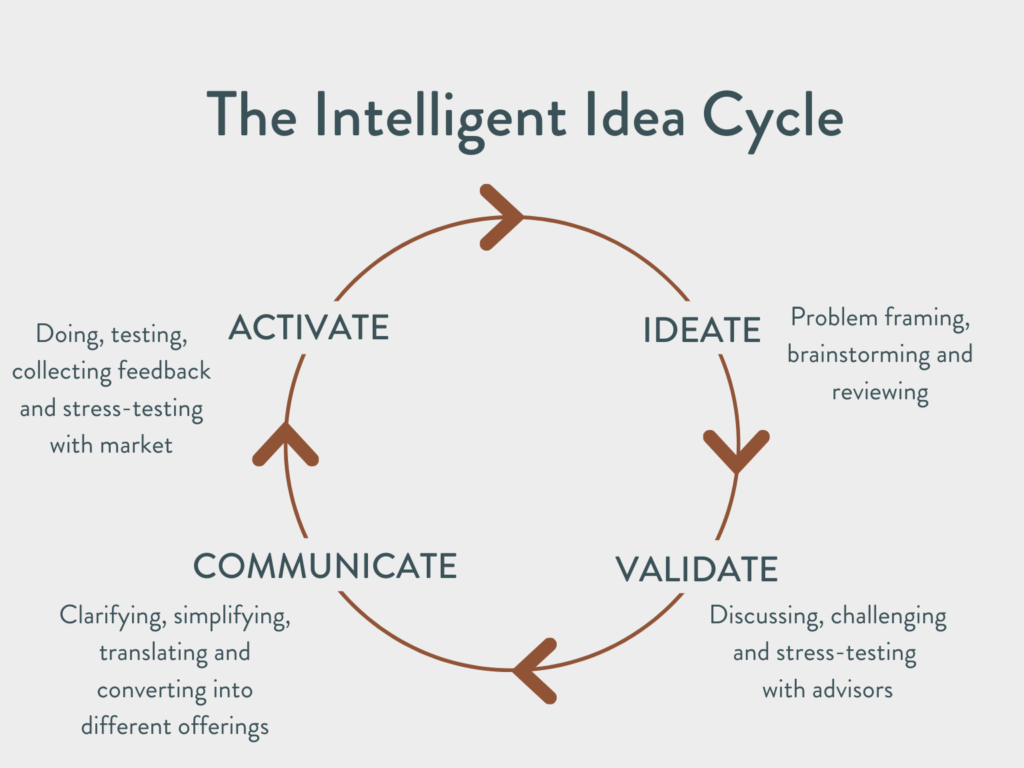How to engage others with your ideas as you’re developing them
We often think of thinking as a solitary activity – something that takes place in our own heads. I prefer the analogy introduced by Annie Murphy Paul in The Extended Mind that our brains are like magpies, fashioning their finished products from the materials around them and weaving bits and pieces they find into their trains of thought.
We engage with entities external to our heads – other people, ideas and data – and draw these into our own mental processes. We’re constantly assembling and reassembling thoughts. And this is a good thing. When done well, it makes our thinking better.
Thought leaders evolve their thinking as they go too. They engage their intended audience, and build a community around their ideas as they are developing them. Even when our clients are tackling something as intense as writing a book, we’re advocates of them building their thought leadership and community as they do so – as opposed to writing in a silo. The leverage in doing so is huge!

We’ve talked before about the Intelligent Idea Cycle – to help you effectively test and improve your ideas. It’s a process through which you ideate, validate, communicate and then activate your ideas – and through this cycle of evolution, you constantly seek feedback and use that feedback to make your ideas better.
Identify your people
The first step is to consider who might best engage with your ideas – who your thinking is likely to have the biggest impact on, or who has a problem that can be solved by your ideas. We commonly see people wanting to keep things broad in order to appeal to everyone, however it doesn’t work that way. You’ll please no one if you try to please everyone, and your ideas will connect with no one if you try to connect with every idea and every person. The more specific you can get about who you exist for, the easier it is to give value to those people and the greater engagement they will have with your ideas.
Ask these questions:
- Think about who you exist to serve. Who are those people?
- What type of businesses are they in? What job title might they have, or where would you find them?
- What do they currently believe about your topic area?
- What are their goals? And what is currently getting in the way of them achieving their goals?
- How would what you do benefit them, or how do you want them to change or think differently after engaging with your ideas?
For us, the people we can best serve are purpose-driven experts. They genuinely want to make something better, and feel like if only people knew what they knew, they would be better off. They’ve got a good business already but now they’re looking to increase their impact by developing and sharing their ideas more widely – so that they can both do good and become the sought-out, trusted leaders in their industry.
Choose your channels
Next, consider where your audience are (you can even ask them!) and then focus on two to three channels max. Continuing our example, our audience are on LinkedIn, and are in professional associations (like Entrepreneurs Organisation and NZ Leaders). They also read books and listen to podcasts.
There are so many options, but an important point here is to pick just a handful for best cut-through. Choose a few channels and do those well – really nurturing that audience, as opposed to haphazardly shoving content everywhere.
Connect & leverage
Building an audience or community is all about connection. It requires establishing genuine and real connections with people who may never have met you, but who are willing to listen to you, engage with you, and potentially support you. To do this, you’ve got to put yourself out there and start reaching out.
- Who can you connect with on LinkedIn, or reach out to in person or via email? Spend a few minutes each day searching for people in your target audience and sending them a personalised message to connect.
- Who do you already know that you’d like to know more of? Awesome people tend to run in packs, so it might be possible to ask those you already know for introductions to others like them.
- Who do you know who has a podcast, or can you approach the people who run some of the ones you listen to?
- What partners do you have that you could work in with? I.e.: are there complementary businesses to your own that you could team up to do a webinar for, thereby getting in front of their community too?
Finally, be engaging
It’s one thing building a community, but then you have to keep them engaged. Too often we see people put all their effort into the outreach and then not follow through with delivering value.
Remember that you’re growing a community, not just passive followers, so the focus should be on conversations. Too many people think that they need to be the loudest foghorn, constantly blasting out content about your own business – but when you learn to engage others in meaningful conversations, that’s when you get a really engaged audience.
Share content that encourages conversation, and think about what question you can ask to get people engaged. It seems too obvious to mention, but when people do respond with a comment or thought, continue the conversation. Ask more questions and respond thoughtfully yourself.
Other ways to engage people with your ideas
If you are seeking engagement and using that content to start conversations, the content you put out there is a high-leverage way to engage others with your thinking. Use their feedback to improve your ideas. But it’s not the only way.
Many of our clients work with people in workshop settings, or via speaking engagements. Both are opportunities to involve others in their thinking. Others do focus-group style discussions or set up an informal ‘brains trust’ for eliciting feedback and furthering their ideas. In other cases, we encourage the use of ‘value exchanges’. These help leaders uncover more valuable insights about their audience, shift assumptions that they’re holding, and understand more fully – in their words – what they already think and know about your topic (as well as possible objections to your ideas or approach).
There are all sorts of ways to engage others in your ideas, and it’s OK – in fact, it’s advisable – to do so as your ideas are developing. As The Extended Mind also posits, the development of intelligent thinking is fundamentally a social process. Our brains have evolved to think with other people – to argue with them, teach them, exchange stories with them. This is how we reason, and it’s how our ideas find traction and create impact.


